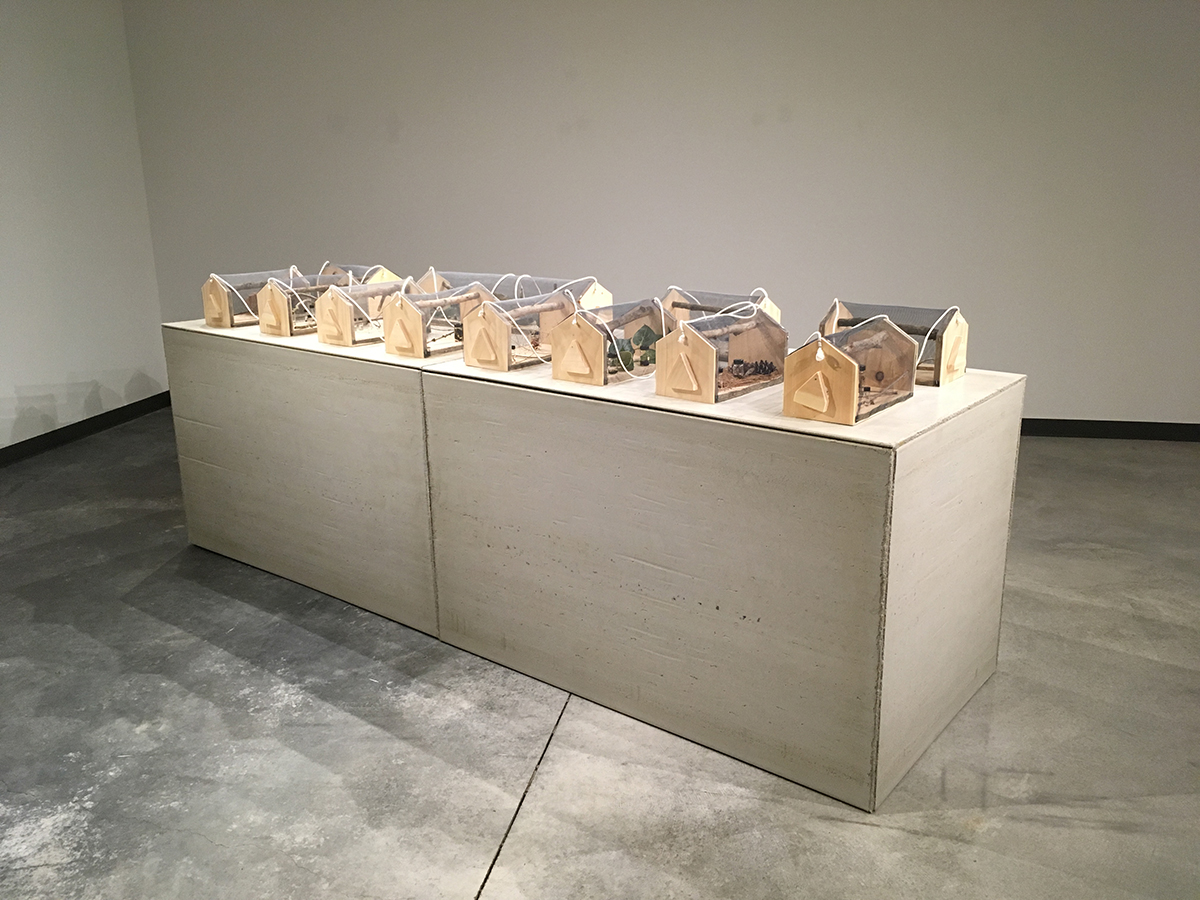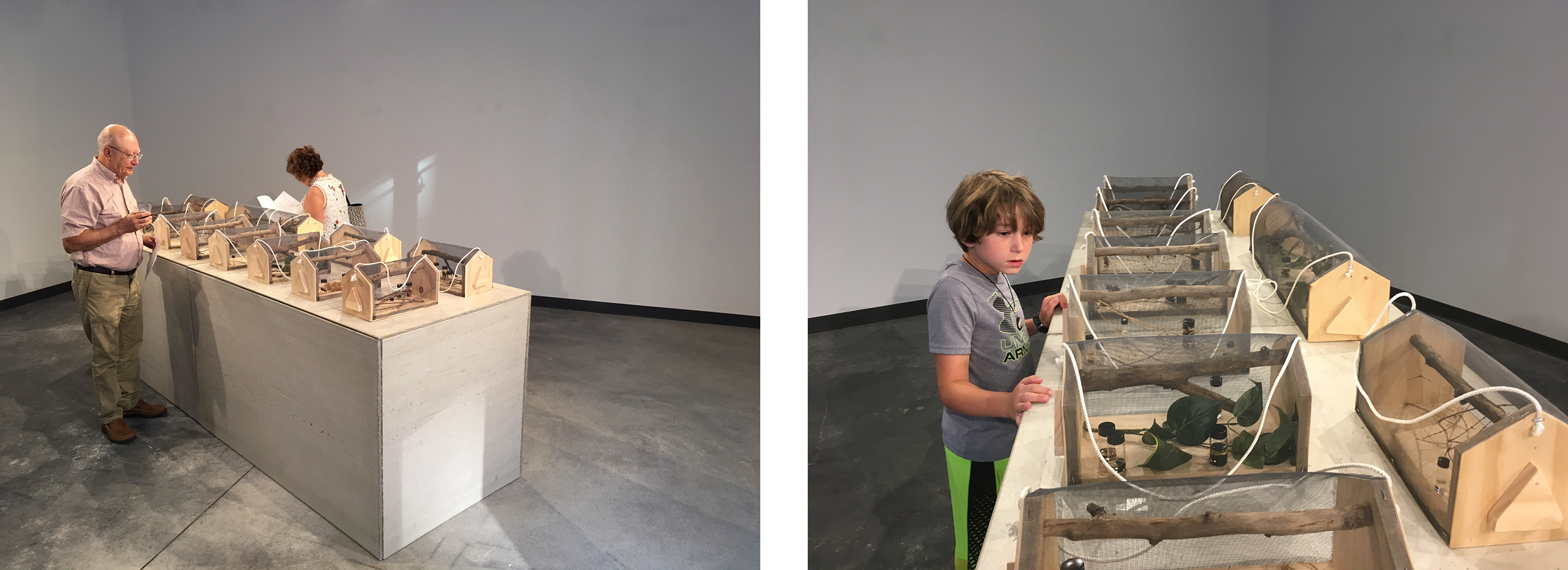Caught at the Border, 2018
Caught At the Border is a project that exists at the intersections of citizen-science, and citizen-domestic, trade,




and immigration policy. The project conflates environmental and agricultural protection with nationalism,
border, and immigration issues to explore our treatment of migrants.
The installation takes the shape of a series of home made children's bug houses, arranged in rows on concrete
slabs, which house euthanized [floating in jars of alcohol] invasive insect specimens from around the world
that were collected by Customs and Border Protections [CBP] at a northeastern US port of entry. In doing this,
I use the United States' practical need to eradicate invasive pests as a thinly veiled allusion to the immigration
crisis, to talk about the inhuman ways in which refugees are treated in the US.
Our inability to think about migrants as humans in need of compassion is exposed here through the perverse
and absurd treatment of these specimens. There is an almost eugenic sounding discourse taking place in
homes and in the media in the US, and internationally around undocumented immigrants and refugees who
are fleeing dangerous, unsafe or oppressive conditions. Using the most unsympathetic [and insulting] avatars,
invasive pests ironically stand in for migrants, as they are locked up and displayed organizationally in
something akin to an internment camp meets kids entomological experiment.
The wooden bug boxes might be found in any suburban nature center workshop for kids, the gift store of a
zoo, or made in the garage by a handy parent to encourage a child's exploration of the natural world. The DIY
screened in containers house environments that are ironically sparse, a poor simulation of nature, resembling
the bare impoverished nature-esque environment of an uncertified zoo or pet store reptile cage.
Defamatory terms such as cockroaches, leeches, pests, bugs, parasites associated with immigrants are a
lingering and ugly tradition that simultaneously insults and dehumanizes. Long have populists claimed that
open borders and unchecked immigration is threat to national security and economic livelihood, but insectile
slander betrays not only anxiety and pride, but a racist and nationalist ethnocentric impulse.
Our established trade routes historically correspond to common immigration flows such as the Chilean and
Mexican pathways. Economic conditions brought about by colonial style trade relationships often create
causes for economic migration. That this migration pattern continues reflects lingering adverse post-colonial
reverberations. This project explores these connections and related difficulties quantifying, understanding
and talking about these complex issues through a human lens. Concerns about security, nationalism,
protectionism, borders, and humane and ethical treatment of individuals are mixed up in this conversation.
In light of recent news about familial separations, the bug houses, originally representative of the internment
camps that ICE was using to house individuals devoid of immigration documents prior to deportation, are
starting to appear more as a reality, than hyperbole in this era of heightened and increasingly draconian
enforcement.
Caught At the Border (2018), 36 x 45 x 120" Cement board, found foliage, hardware, insect specimens collected
by U.S. Customs and Border Protection [CBP], rope, screen, wood
This work was first shown in June 2018, as a part of the exhibition, Permission Structures
Click here to see all works in the the Permission Structures Exhibition
Click here to view or download the Permission Structures Catalog
Click Home